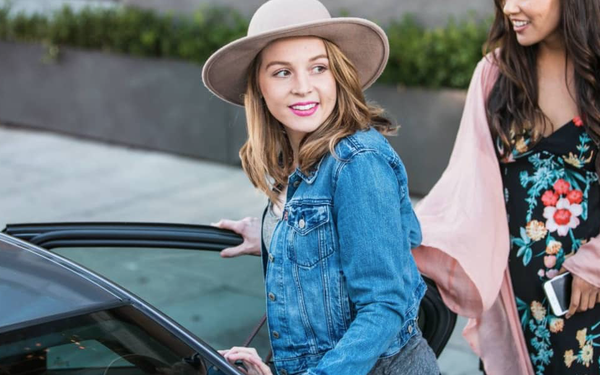
An acquaintance of mine encountered a situation involving a ride share company last week that gave her pause.
She had opted for a shared ride, which is more economical. When it arrived to
pick her up, there were already three large men in the car, the driver and two other passengers. Her instincts told her this wasn’t a safe situation, and she ended up forgoing the ride.
Maybe she was overreacting -- but in my opinion, it’s never a bad thing to follow your gut. Better safe than sorry.
Ride safety is garnering attention after a California woman
was killed in March after getting into a car she mistook for an Uber.
Automakers, who are all upping their “mobility” plans to include alternative forms of transit, have a stake in
ride-share companies, and, hopefully, are paying attention to this issue.
advertisement
advertisement
General Motors owns 18.6 million shares of Lyft after investing $500 million in the company in January 2016,
while Toyota and Denso invested $667 million in Uber in April. And Toyota and Uber are also working together to develop self-driving cars. The automaker will add self-driving Sienna minivans to Uber's
ride-hail fleet starting in 2021 on a trial basis.
Ride-share companies aren’t oblivious to potential safety risks and concerns. Uber sent out an email to riders on Friday with the
subject line “It starts with safety.” The email shows a picture of a young woman in the rider’s position and has the headline “Safety in action.” The copy reads:
“We’re committed to helping keep you safe when you ride with Uber. Safety is at the heart of everything we do — that includes providing trip insurance and building technology that
keeps you protected.”
The email goes on to describe how riders have access to safety tools, including an “emergency assistance” button and “share my trip” by
tapping the blue shield in the app during the ride. Riders can also get 911 assistance directly from the app. “If you need to call 911, the Uber app will display your location and trip details
so you can quickly share them with the dispatcher,” according to the email.
Riders can also share their trips “for added peace of mind” by setting up trusted contacts
and creating reminders to share real-time trip details with loved ones.
On a website that the email links to, Uber offers suggestions for keeping safe, including checking that you are
getting into the correct vehicle. “Before you hop in, take a second to double-check the app for your driver’s information. Follow these three steps to make sure you get into the right car:
step 1, Match the license plate number; step 2, Match the car make and model and step 3, Check the driver's photo.”
The website details how all potential drivers in the United States
must complete a screening before becoming an Uber driver-partner, and current drivers continue to be vetted for criminal offenses. Screenings check for moving violations, drinking- and drug-related
offenses, violent crime and felonies. Potential drivers who qualify still have to remain in good standing with the law to stay in the Uber community
Finally, the company is investing in
technology to mask riders' phone numbers when they call or text their driver through the app.
The email from Uber is an acknowledgement of what everyone already knows.
We have no choice but to put ourselves at risk during the course of everyday living. It’s a positive step that Uber is doing something to increase safety and ease fears.